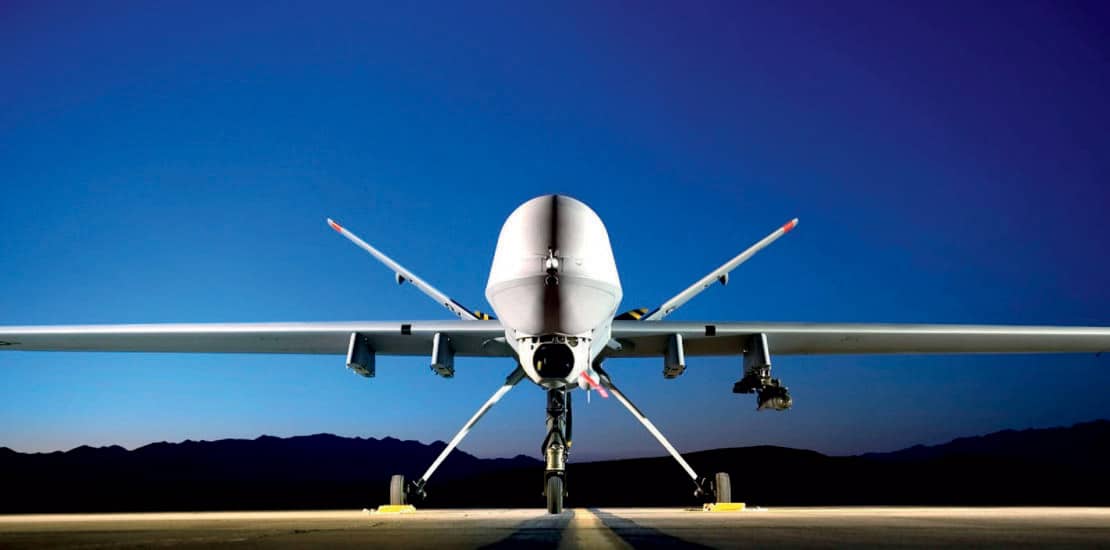By: Abdul Nuhu, Chief Engineer, Engineering, Science & Technology, Amentum
Introduction
In today’s rapidly evolving technological landscape, the Department of Defense (DoD) faces numerous challenges in transforming and modernizing its operations to maintain its military superiority. Model-Based Systems Engineering (MBSE) has emerged as a powerful methodology that can significantly accelerate this transformation. By leveraging the benefits of MBSE, the DoD can enhance decision-making, streamline development processes, and optimize resource allocation, ultimately driving efficiency and innovation across its complex systems. This article explores how MBSE can expedite the transformation and modernization efforts in the DoD.
Enhanced Decision-Making
MBSE provides a holistic and integrated framework for capturing, analyzing, and visualizing system requirements, architecture, behavior, and performance. This enables decision-makers to have a comprehensive understanding of the system and its dependencies, facilitating better-informed decisions at every stage of the system’s lifecycle.
One key advantage of MBSE is its ability to facilitate quicker Analysis-of-Alternatives (AoA) and trade-off analysis. Decision-makers can use MBSE models to assess different design alternatives, evaluate their impact on system performance, cost, and schedule, and make decisions based on objective and quantifiable metrics. This approach allows the DoD to optimize system designs, balance competing requirements, and allocate resources effectively.
Furthermore, MBSE enables effective collaboration and communication among multidisciplinary teams. By utilizing a common modeling language and a shared repository of system models, stakeholders from different domains can collaborate seamlessly. This collaboration improves the exchange of information, promotes shared understanding, and reduces the risk of miscommunication. Decision-makers can leverage the collective expertise of the team, leading to better decisions that reflect a broader range of perspectives.
MBSE also supports decision-making in the context of system sustainment and evolution. By maintaining an up-to-date model of the system, decision-makers can assess the impact of proposed changes, such as upgrades or modifications, before implementation. They can evaluate the effects on system performance, interoperability, and lifecycle costs, ensuring that decisions are made with a clear understanding of the potential consequences.
Streamlined Development Processes
Model-Based Systems Engineering (MBSE) is an approach that utilizes models as the central artifact for system development, enabling a streamlined and efficient development process. By representing system requirements, designs, and behavior in a model-based format, MBSE offers several benefits that can significantly enhance development processes.
Traditional development processes often involve complex and lengthy documentation, leading to misinterpretations and communication gaps. In contrast, MBSE employs graphical models that are easily understood by different stakeholders, such as engineers, designers, and customers. These models serve as a common language, facilitating effective communication and fostering collaboration throughout the development lifecycle.
The Models also allow for visualizing system architectures, components, and their relationships, providing a holistic view of the system. This enables early detection of design flaws, potential conflicts, and performance bottlenecks, enabling proactive decision-making and reducing the likelihood of costly rework. Through simulation and analysis capabilities, MBSE enables the assessment of system behavior under various scenarios, optimizing system performance and ensuring its adherence to requirements.
MBSE promotes reusability and modularity. Models can be structured hierarchically, allowing for the encapsulation of components and subsystems. This modular approach enables the reuse of model elements across different projects and system variants, reducing development time and effort. Moreover, changes made to one part of the model can be automatically propagated to dependent parts, ensuring consistency, and minimizing errors.
Models also provide traceability links between system requirements, design elements, and test cases. This facilitates impact analysis, change management, and verification/validation activities. Additionally, MBSE enables the incorporation of compliance standards and regulations into the models, ensuring that system development remains aligned with applicable guidelines and facilitating the certification process.
Optimized Resource Allocation
MBSE offers significant potential to optimize resource allocation for the Department of Defense (DoD). MBSE enables the DoD to develop comprehensive and integrated system models that capture all relevant aspects of a given defense system. These models can include requirements, architecture, behavior, interfaces, and performance parameters. By having a holistic view of the system, decision-makers can make more informed choices about resource allocation. They can identify areas of redundancy, eliminate unnecessary components, and optimize the allocation of personnel, equipment, and budgetary resources.
Decision-makers can analyze the impact of different resource configurations on system performance, cost, and schedule. They can perform “what-if” analyses to assess trade-offs and identify the most efficient allocation strategies. By conducting these simulations in a virtual environment, the DoD can minimize risks and costs associated with physical prototyping and testing.
The use of standardized modeling languages and frameworks enables a common understanding of system requirements and constraints. This promotes effective communication and coordination among different organizations and disciplines within the DoD. Improved collaboration reduces the likelihood of resource conflicts and ensures that resources are allocated in a coordinated and synergistic manner.
Additionally, MBSE supports iterative and incremental development processes, allowing the DoD to adapt resource allocation strategies over time. As the system evolves and new information becomes available, decision-makers can update the system models and reassess resource allocations accordingly. This flexibility enables the DoD to respond to changing mission requirements, technological advancements, and budget constraints effectively.
Interoperability and Integration
The DoD relies on a vast array of interconnected systems and platforms. MBSE plays a pivotal role in enabling the DoD to achieve interoperability and seamless integration across its complex systems. By leveraging MBSE methodologies, the DoD can streamline communication, collaboration, and decision-making processes throughout the lifecycle of its systems, resulting in enhanced interoperability and efficient integration.
One of the key advantages of MBSE is its ability to provide a unified modeling language and framework for capturing system requirements, designs, and behaviors. This standardized approach ensures that all stakeholders, including different branches of the military, government agencies, and contractors, can communicate effectively and share a common understanding of the system architecture.
Through MBSE, the DoD can create a digital representation of its systems, encompassing various domains such as hardware, software, communications, and human factors. This holistic representation allows different systems to be modeled and simulated together, enabling the identification of potential integration challenges early in the development process. By detecting and resolving interoperability issues at the design stage, costly rework and delays during system integration can be minimized.
MBSE also enables virtual testing and verification of system interoperability. This approach allows the DoD to assess the behavior and performance of complex systems under different operational scenarios, ensuring seamless integration and interoperability in real-world situations. By conducting virtual tests, the DoD can reduce the risks associated with live testing, save time, and optimize resource allocation.
MBSE promotes a collaborative environment. through shared models and information exchange, teams can work together to identify and address potential interoperability challenges proactively. This collaborative approach fosters coordination among different agencies and contractors, facilitating seamless integration of systems across the DoD.
Agility and Adaptability
MBSE has emerged as a powerful approach that enhances the ability of the Department of Defense (DoD) to be more agile and adaptable in its operations. MBSE revolutionizes traditional systems engineering practices by utilizing models as the primary means of capturing, analyzing, and communicating system requirements, designs, and behaviors. This shift from document-centric to model-centric practices enables the DoD to respond swiftly to evolving mission requirements and technology advancements.
Through the use of models, system engineers can simulate and evaluate different design alternatives, allowing for early detection of potential issues and the exploration of innovative solutions. This iterative approach promotes agility, as it enables the DoD to quickly adapt and refine systems based on feedback and changing needs.
MBSE supports better collaboration and communication among multidisciplinary teams. By providing a common visual language, models break down silos between stakeholders and foster a shared understanding of system requirements and behaviors. This collaborative environment enhances the ability to integrate diverse perspectives, resolve conflicts, and make informed decisions, ultimately leading to more effective and adaptable solutions.
MBSE improves the traceability and transparency of system development. Models capture the relationships between system components, requirements, and design decisions, enabling comprehensive traceability throughout the entire lifecycle. This traceability not only enhances accountability but also facilitates the identification of potential impacts when changes occur. As a result, the DoD can rapidly assess the consequences of modifying a requirement, subsystem, or operational scenario, allowing for more informed decision-making and quicker adaptations.
MBSE also supports the integration of emerging technologies such as artificial intelligence, machine learning, and autonomous systems. By modeling these technologies and their interactions with the overall system, the DoD can evaluate their feasibility, performance, and potential risks before implementation. This proactive approach enables the DoD to capitalize on technological advancements and stay ahead of adversaries, reinforcing its ability to adapt to dynamic operational environments.
Innovation and Continuous Improvement
MBSE plays a crucial role in fostering innovation and continuous improvement within the Department of Defense (DoD). By employing a holistic and systematic approach to managing complex defense systems, MBSE enables greater collaboration, efficiency, and adaptability throughout the entire lifecycle of these systems.
One key aspect of MBSE is its ability to facilitate early and iterative design exploration. By employing modeling and simulation techniques, MBSE allows defense engineers and stakeholders to experiment with different design alternatives and assess their performance and viability before committing to physical prototypes. This not only reduces development costs and time but also encourages innovative thinking and the exploration of new ideas. Engineers can easily visualize, analyze, and refine system architectures, components, and interfaces, fostering creativity and enabling the identification of novel solutions to complex defense challenges.
MBSE also promotes interoperability and integration across various defense domains. The DoD operates a vast array of systems, subsystems, and technologies that must work together seamlessly. MBSE provides a common language and framework for capturing, representing, and exchanging system information and requirements among different stakeholders and disciplines. This enables better collaboration, coordination, and integration of efforts, leading to improved system performance and efficiency. By breaking down organizational and technical silos, MBSE encourages innovation through cross-pollination of ideas and knowledge sharing.
Another important aspect of MBSE is its focus on continuous improvement and lifecycle management. Through the use of digital models and data-driven analysis, MBSE enables proactive decision-making and performance optimization throughout the lifecycle of defense systems. By capturing and analyzing real-time data from operational systems, MBSE helps identify areas for improvement, predict maintenance needs, and inform future design iterations. This iterative feedback loop drives a culture of continuous learning, innovation, and enhancement within the DoD, ensuring that defense systems are constantly evolving to meet changing requirements and emerging threats.
Conclusion
In conclusion, MBSE fosters innovation and continuous improvement within the DoD by promoting early exploration of design alternatives, enabling interoperability and integration, and facilitating data-driven decision-making throughout the lifecycle of defense systems. By embracing MBSE, the DoD can harness the power of digital modeling, simulation, and analysis to drive innovation, enhance system performance, and maintain technological superiority in an ever-evolving defense landscape.
To learn more about Amentum’s experience and team of experts, click here.










